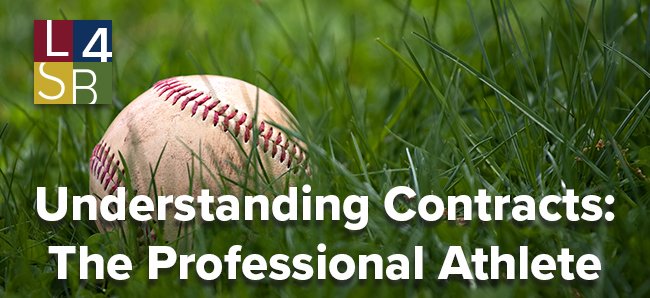When most of us hear about our favorite pro athlete signing with a new team, we see dollar signs. Mike Trout’s $426 million contract with the Los Angeles Angels makes for good conversation at any happy hour. And then there’s the lawsuit recently brought by the U.S. women’s national soccer team against the U.S. Soccer Federation over disparity in pay compared to their male counterparts. But sticker shock aside, professional athletes’ salaries are just one of many elements of a professional sports contract. Here, we’ll cover several fundamental elements of contracts between professional teams and athletes: (1) negotiation; (2) salary caps; and (3) free agents.
Most professional athletes enter into a contract with a professional team for a specified number of seasons. These contracts are termed “standard player contracts” (“SPKs”). Standard player contracts are essentially limited duration employment contracts where the team agrees to pay the player to train for and play a certain number of games in a season in exchange for the player’s unique skillset. Many SPKs also require players to make appearances at publicity campaigns, nonprofit events, and press conferences.
Negotiating a Sports Contract
Rather than starting from scratch, professional teams and athletes begin the contracting process with a “boilerplate” contract that has already been drafted as part of the collective bargaining agreement between the sports league and the players’ association. The boilerplate contract provides the governing state law, arbitration procedures, league rules, and liability terms, among other terms. However, players may negotiate changes to existing terms or incorporate new terms into the agreement. Because of the high-stakes nature of the contract, many professional athletes hire attorneys or agents to negotiate contract terms on their behalf. The agent will focus heavily on the player’s signing bonus (more on this later) and might assess negotiating a “no trade” clause to avoid the potential of being assigned to another team. Other commonly negotiated terms include provisions for merchandising royalties, termination, disability benefits, and insurance coverage – especially in light of increasing litigation over concussions in contact sports. But what about that paycheck?

Salary Caps
It might be hard to believe (especially when we think about the NBA or NFL), but many professional leagues cap the amount of money each team can spend on player salaries in any given year. Salary caps prevent wealthier teams from enticing the best players away from less-wealthy teams. Without this equality in purchasing power, teams with less money would end up with less talent. In short, salary caps aim to keep games interesting for viewers, which in turn ensures profitability for sports leagues. Given this limit on salaries for each team, players negotiate heavily for signing bonuses, which often fall outside the salary cap restriction. The signing bonus, along with the salary and other sports contract provisions like insurance and retirement benefits, add up to far more than the player’s salary (FYI Mike Trout negotiated a $20 million signing bonus on top of his $426 million salary over twelve years). So, what happens in 2031 when Mike Trout’s contract with the Angels is up? He becomes a free agent.
Free Agents
Free agents are professional athletes who can enter into contracts with any team they want, rather than being bound to playing for a specific team. Free agents are classified as restricted or unrestricted. Unrestricted free agents can enter into new contracts with any team, often because their contract expired (as will be the case with Mike Trout in 2031), or because they were not selected by a team in the league draft. Restricted free agents, on the other hand, might still be under contract with a team, but the contract provisions may allow players to seek out a new contract with another team after they’ve played a certain number of seasons, or reached a certain age, for example. We call these restricted free agents because the player’s current team retains a right of first refusal: if the current team chooses to match a new potential team’s offer, the player is obligated to remain with the current team through the term of the contract.
Bottom line: professional sports contracts comprise much more than the sticker price of the player’s salary that we see on the front page of the sports section. Professional athletes must be hyper-diligent during contract negotiations, especially when it comes to signing bonuses, no trade provisions, injury liability, and restricted free agency provisions. Enlisting an agent with expertise in this specialized field of contracts is crucial to securing equitable compensation, benefits, and future employment opportunities. That’s where we come in.

Talk to a Contract Attorney Today!
Ready to speak to a Contract Attorney?
Contact us or give us a call at 505.715.5700

